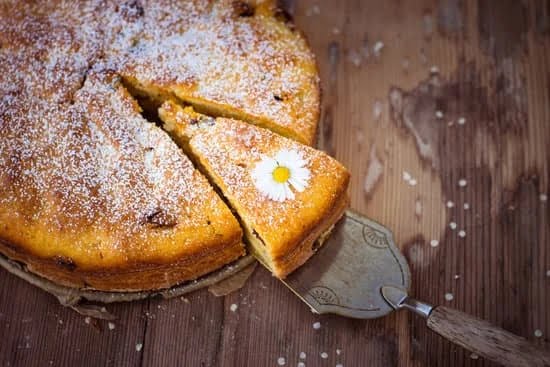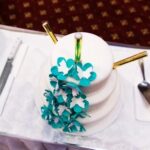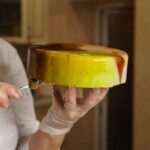Cake making and decorating is both a skill and an art form that has captivated people for centuries. The process of transforming basic ingredients into a delectable cake and then adorning it with intricate designs is not only visually appealing but also deeply satisfying.
Whether you are a seasoned baker or just starting out, this blog post aims to delve into the world of cake making and decorating, providing you with the knowledge, techniques, and inspiration needed to create stunning cakes for any occasion.
In this article, we will cover the fundamentals of cake making, from essential ingredients to step-by-step instructions for creating a basic cake. We will explore various cake decorating techniques such as frosting, piping, and fondant, providing helpful tips and tricks along the way.
For those interested in working with fondant, we’ll guide you through the process of covering a cake flawlessly. Additionally, we’ll showcase unique and creative cake designs for different occasions and offer guidance on incorporating themes and personalized elements into your own creations.
To embark on your cake-making journey, it is important to have the right tools at your disposal. We will compile a comprehensive list of must-have tools for both baking and decorating cakes and explain their purpose and importance. Furthermore, we’ll discuss common mistakes that beginners often make when baking cakes and provide valuable tips on how to avoid or fix them.
For those who aspire to turn their passion for cake making and decorating into a business venture, we’ve got you covered too. We’ll dive into the potential benefits and challenges of starting a cake making business, offering guidance on licensing requirements, pricing strategies, marketing techniques, as well as building an online presence.
Whether you’re aiming to create jaw-dropping masterpieces or simply want to surprise loved ones with homemade treats, this blog post aims to be your go-to resource for all things related to cake making and decorating. So grab your apron, roll up your sleeves, and let’s dive into the sweet and satisfying world of cake making and decorating.
The Basics of Cake Making
Cake making is a delightful and fulfilling art form that brings joy to both the creator and the recipient. Before diving into the world of cake decorating, it is important to understand the basics of cake making. In this section, we will discuss essential ingredients, tools needed, different types of cake bases, and provide a step-by-step process for making a basic cake.
To create a delicious and moist cake, it’s crucial to have the right ingredients on hand. Some essential ingredients include flour, sugar, eggs, butter or oil, flavorings such as vanilla extract or cocoa powder, leavening agents like baking powder or baking soda, and a liquid such as milk or buttermilk. Each ingredient plays a specific role in ensuring the success of your cake.
In addition to ingredients, having the right tools will make the process much easier. Some basic tools you’ll need for cake making include mixing bowls, measuring cups and spoons, an electric mixer or whisk for blending ingredients smoothly and evenly, baking pans in various sizes for different types of cakes (round pans for layer cakes or square pans for sheet cakes), a spatula for leveling batter and frosting cakes, and a wire rack for cooling baked cakes.
Once you have gathered your ingredients and tools, it’s time to choose the type of cake base you want to make. There are several options to consider including sponge cakes (light and airy), butter cakes (dense and moist), chiffon cakes (combines elements of sponge and butter cakes), or even vegan or gluten-free variations. Each type has its own unique characteristics that contribute to the overall texture and taste.
Now that we have covered the fundamentals of cake making, let’s dive into the step-by-step process of creating a basic cake. Here is a simple recipe:
- Preheat your oven to the specified temperature.
- Grease your baking pan(s) with butter or cooking spray.
- In a mixing bowl, combine the dry ingredients (flour, sugar, baking powder/soda, and salt) and whisk together.
- In another bowl, combine the wet ingredients (eggs, milk, oil/butter, and vanilla extract) and whisk well.
- Gradually add the wet ingredients to the dry ingredients and mix until just combined. Be careful not to overmix as this can result in a dense cake.
- Pour the batter into your prepared pan(s) and smooth the surface with a spatula.
- Bake in the preheated oven for the recommended time or until a toothpick inserted into the center comes out clean.
- Let the cake cool in the pan for a few minutes before transferring it to a wire rack to cool completely.
Mastering these basic cake making skills will lay a solid foundation for your journey into cake decoration. Next, we will delve into different techniques for decorating cakes that will truly elevate your creations to new heights of beauty and artistry.
Different Cake Decorating Techniques
Cake decorating is an essential aspect of the art of cake making. It allows bakers to transform plain cakes into visually stunning masterpieces. In this section, we will explore various cake decorating techniques that can elevate your cakes from ordinary to extraordinary.
One of the most common cake decorating techniques is frosting. Frosting a cake not only adds a layer of deliciousness but also serves as a canvas for creative designs. Whether you prefer buttercream or whipped cream frosting, it’s important to achieve a smooth and professional-looking finish.
To do this, make sure your cake layers are flat and leveled before applying the frosting. Use an offset spatula to spread a thin layer of frosting on the top and sides of the cake, known as the crumb coat. This helps to seal in any loose crumbs and provides a smooth base for your final coating of frosting.
Another popular technique in cake decorating is piping. Piping involves using different types of pastry bags and tips to pipe decorative designs onto cakes. The possibilities are endless with piping – you can create intricate patterns, elegant borders, or even write personalized messages on cakes. Just remember to practice proper hand control and consistency in pressure while piping to maintain uniformity in your designs.
For those looking for more advanced techniques, fondant is a great option. Fondant is a pliable icing-like substance that can be rolled out and draped over cakes for a smooth finish. It offers a sleek and polished look that is perfect for formal occasions such as weddings or anniversaries.
To work with fondant, start by rolling it out into a thin sheet using powdered sugar or cornstarch to prevent sticking. Gently lift the rolled fondant over your cake and smooth it down using your hands or a fondant smoother tool.
Working with Fondant
Working with fondant can seem intimidating for beginners, but with the right guidance and practice, it can open up a world of creative possibilities in cake decorating. Fondant is a pliable icing-like substance that can be rolled out and draped over cakes to create smooth finishes and intricate designs. In this section, we will explore what fondant is, its purpose in cake decoration, and provide a step-by-step guide on how to cover a cake with fondant.
Understanding Fondant
Fondant is made from a mixture of sugar, water, and other ingredients to create a dough-like consistency. It is typically used to cover cakes, providing them with a sleek and polished look. Fondant serves as a canvas for various cake decorating techniques such as sculpting shapes, creating realistic details, or adding vibrant colors.
There are two main types of fondants: commercially made fondant and homemade marshmallow fondant (MMF). Commercially made fondants are readily available in stores and come in different colors and flavors. MMF is made by melting marshmallows and mixing them with powdered sugar until it forms a pliable dough.
Covering a Cake with Fondant
Before working with fondant, it’s essential to have a fully baked and cooled cake. Begin by leveling the top of the cake if necessary. Next, prepare the cake by brushing it lightly with simple syrup or buttercream icing. This helps the fondant adhere to the cake.
Dust your work surface with powdered sugar or cornstarch to prevent sticking. Roll out the fondant into a large circle or rectangle that is slightly larger than your cake’s dimensions. Carefully lift the rolled-out fondant using a rolling pin or your hands and gently drape it over the cake.
Smooth out any air bubbles or wrinkles using your hands or a smoother tool. Once the fondant has been smoothed onto the cake completely, trim off any excess fondant from the bottom using a knife or pizza cutter. Lastly, use your fingertips to create a clean edge around the base of the cake.
Tips for Achieving a Smooth Finish
Achieving a smooth and flawless fondant finish takes practice and patience. Here are some tips to help you along the way:
- Start with a clean and well-prepared cake surface.
- Knead the fondant thoroughly until it is soft and pliable.
- Roll out the fondant evenly, ensuring it is not too thick or too thin.
- Use a fondant smoother tool to gently press and smooth the fondant onto the cake.
- Work slowly and methodically, smoothing out any wrinkles as you go.
- If air bubbles appear, use a pin to gently release them and smooth out the area.
Remember, working with fondant may take some time to master, but don’t be discouraged by imperfections. With practice, you will develop your own techniques and discover what works best for you in creating beautifully decorated cakes using fondant.
Exploring Creative Cake Designs
When it comes to cake making and decorating, one of the most exciting aspects for many people is the opportunity to create unique and creative designs. Whether it’s a birthday, wedding, or baby shower, designing a cake that matches the occasion can truly elevate the overall experience. In this section, we will explore some tips and ideas for creating stunning and personalized cake designs.
Highlighting Occasion-specific Themes
One way to make your cake design stand out is to incorporate specific themes that are relevant to the occasion. For example, if you’re making a cake for a child’s birthday party with a superhero theme, consider adding decorations such as fondant cutouts resembling superheroes or their logos.
Alternatively, if you’re designing a wedding cake, think about incorporating elements from the couple’s love story or hobbies. This personal touch will not only impress guests but also make the cake more meaningful and memorable.
Playing with Colors and Textures
Another effective way to create visually appealing cakes is by playing with colors and textures. Use bold and vibrant colors that complement each other well to make your design pop. Experiment with different textures such as using buttercream frosting to create smooth finishes or adding intricate patterns using piping techniques. By combining different textures on your cake, you can add depth and dimension that will catch everyone’s attention.
Considering Personalized Elements
Adding personalized elements is a great way to make your cake design truly special. This could involve incorporating the recipient’s name or initials into the cake design using fondant or edible markers. You can also consider including inside jokes or important milestones that are relevant to the person or event being celebrated. These personalized touches will not only create a unique design but also show how much thought and care went into creating the cake.
By embracing these ideas and incorporating them into your cake designs, you can take your cake making and decorating skills to the next level. Remember, the possibilities are endless when it comes to creating stunning and personalized cakes. Let your imagination run wild and don’t be afraid to experiment with different techniques and designs.
Cake Making and Decorating Tools You Need
When it comes to cake making and decorating, having the right tools and equipment is essential to create beautiful and professional-looking cakes. Whether you are a beginner or an experienced baker, having a well-stocked toolbox will make the cake-making process much easier and more enjoyable. In this section, we will discuss the must-have tools for cake making and decorating, their purpose, and provide recommendations for high-quality yet affordable options.
One of the most important tools in cake making is a good set of measuring cups and spoons. Accurate measurements are crucial for achieving consistent results in baking. Silicone measuring cups and spoons are heat-resistant, easy to clean, and come in a variety of sizes. Another essential tool for cake making is a sturdy mixer. While stand mixers are ideal for large batches or frequent baking, handheld mixers work well for occasional bakers.
A good set of mixing bowls is also necessary when making cakes. Stainless steel bowls with non-slip bottoms are durable, lightweight, and perfect for whisking egg whites or creaming butter and sugar. Additionally, an offset spatula is an excellent tool for frosting cakes smoothly. Its angled blade allows for precise control while spreading frosting or smoothing edges.
| Tool | Purpose |
|---|---|
| Measuring cups/spoons | To measure ingredients accurately |
| Mixer (stand or handheld) | To mix ingredients thoroughly |
| Mixing bowls | To combine ingredients |
| Offset spatula | To evenly spread frosting and create smooth finishes |
In addition to these essential tools, there are many other items that can enhance your cake making and decorating experience. Decorating bags and tips are necessary for piping frosting or creating intricate designs. A turntable provides a rotating surface, making it easier to frost and decorate cakes evenly. Cake pans of various shapes and sizes are also essential for creating different cake bases.
It’s important to invest in good-quality tools that will last long and deliver consistent results. However, you don’t have to break the bank to get started. There are many affordable options available online and at local baking supply stores. It’s always helpful to read reviews before purchasing any equipment, especially if you’re considering a higher-end product.
By having the right tools at your disposal, you’ll be well-equipped to create beautiful cakes that impress your family and friends. So, stock up on the necessary tools, let your creativity flow, and enjoy the art of cake making and decorating.
Common Cake Baking Mistakes to Avoid
Baking a cake can be an enjoyable and rewarding experience, but even experienced bakers can make mistakes. In this section, we will identify some of the most common cake baking mistakes and provide tips and strategies on how to avoid or fix them.
- Overmixing the Batter: One of the easiest mistakes to make when baking a cake is overmixing the batter. Overmixing can lead to a dense and tough texture in the final product. To prevent this, it is important to mix the batter just until all the ingredients are combined and no lumps remain. Use a gentle folding motion rather than vigorous stirring to maintain a light and airy texture.
- Incorrect Oven Temperature: Another common mistake is not baking the cake at the correct temperature. An oven that is too hot can cause the cake to rise too quickly and then collapse, while an oven that is too cool may result in an under-baked or dense cake. It is essential to preheat your oven according to the recipe instructions and use an oven thermometer to ensure accurate temperature.
- Opening the Oven Door Too Often: It’s tempting to check on your cake while it’s baking, but opening the oven door frequently can disrupt the baking process. Each time you open the door, heat escapes, causing fluctuations in temperature that can affect how your cake rises and bakes evenly. Instead, rely on visual cues such as skewer or toothpick tests towards the end of cooking time for doneness.
| Common Cake Baking Mistake | Tips for Prevention/Fix |
|---|---|
| Overmixing | Mix only until ingredients are combined; use a gentle folding motion. |
| Incorrect Oven Temperature | Preheat oven properly; use an oven thermometer to ensure accurate temperature. |
| Opening the Oven Door Too Often | Minimize opening the door during baking; rely on visual cues for doneness. |
By understanding and avoiding these common cake baking mistakes, you can elevate your baking skills and achieve consistently delicious results. Remember, practice makes perfect, and with time and experience, you will become more proficient in the art of cake making.
Tips for Starting a Cake Making and Decorating Business
Starting a Cake Making and Decorating Business
If you have a passion for cake making and decorating, why not turn it into a business venture? Starting a cake making and decorating business can be an exciting and fulfilling endeavor. Not only does it allow you to showcase your creativity and skills, but it also provides the opportunity to bring joy to others through delicious and beautifully designed cakes. Here are some tips to help you get started on your journey:
Research and Planning
Before diving into any business venture, it’s important to conduct thorough research and create a comprehensive plan. Start by researching the market in your area to determine the demand for custom cakes and identify potential competition. Consider your target audience, their preferences, and the trends in cake designs.
Next, create a business plan that outlines your goals, target market, pricing strategy, marketing plan, budget, and projected expenses. Having a solid plan will help guide you throughout the process and increase your chances of success.
Acquire Necessary Licenses
To legally operate a cake making and decorating business, you may need certain licenses or permits depending on your location. Research the local regulations regarding food handling, sanitation practices, zoning restrictions, and any other requirements specific to starting a baking business.
Contact your local health department or small business administration office to inquire about the necessary licenses or permits needed in your area. It’s important to comply with these regulations to ensure the safety of your customers and maintain professionalism in your business.
Set Pricing Structure
Determining how much to charge for your cakes can be challenging but crucial for running a profitable business. Consider factors such as ingredient costs, overhead expenses (rental space, utilities), labor cost (your time or employees’ wages), and desired profit margin when setting prices.
Research similar businesses in your area to get an idea of their pricing structure. You may choose to charge per serving, per cake size, or have a fixed price depending on the complexity of the design. Be sure to factor in the value of your time and skills when pricing your cakes.
Build a Strong Portfolio and Online Presence
A portfolio showcasing your cake designs is essential for attracting potential customers and establishing credibility in the industry. Take high-quality photos of your creations from various angles to highlight different techniques and designs. Include a variety of cake themes, sizes, flavors, and icing styles to demonstrate your versatility.
In today’s digital age, having an online presence is crucial for reaching a wider audience. Create a professional website or blog where you can showcase your portfolio, provide information about your services, share testimonials from satisfied customers, and display contact information for inquiries. Utilize social media platforms such as Instagram and Facebook to regularly share photos of your latest creations and engage with potential customers.
Starting a cake making and decorating business can be an exciting venture that allows you to turn your passion into a career. With careful planning, creativity, and dedication, you can establish yourself as a reputable cake decorator while bringing joy to others through delicious works of art.
Conclusion
In conclusion, cake making and decorating is a delightful art form that allows individuals to showcase their creativity and bring joy to others through delicious and beautifully designed cakes. Throughout this blog post, we have explored the basics of cake making, different cake decorating techniques, working with fondant, exploring creative cake designs, essential tools needed for cake making and decorating, common baking mistakes to avoid, and tips for starting a cake making and decorating business.
By understanding the essential ingredients and tools needed for cake making, as well as the step-by-step process of creating a basic cake, readers can confidently embark on their own baking adventures. Additionally, learning about various cake decorating techniques such as frosting, piping, and fondant provides endless possibilities for creating intricate designs on cakes.
With tips and tricks for achieving smooth frosting finishes and step-by-step guides on covering cakes with fondant, readers can elevate their cake decorating skills to new heights.
Moreover, exploring creative cake designs for different occasions not only adds a personalized touch but also allows individuals to express themselves artistically. By incorporating themes, colors, and personalized elements into the design process, readers can create unique cakes that leave lasting memories. Building a collection of high-quality tools is key to successful cake making and decorating endeavors. From basic essentials to specialized equipment like piping bags and molds – having the right tools ensures professional results.
Lastly, it is important to embrace the joys of engaging in this art form. Cake making and decorating should be seen as an enjoyable hobby or even a potential business venture. The sense of fulfillment in creating beautiful confections cannot be overstated. Whether you choose to make cakes for family gatherings or explore the possibility of starting your own business in this field – don’t be afraid to continue honing your skills while embracing your creative side.
Frequently Asked Questions
What is cake making and decorating?
Cake making and decorating is the process of creating a cake from scratch or using pre-made cake mixes, and then embellishing it with various decorative elements to enhance its appearance. It involves both the baking of the cake layers and the artistic aspect of adding frosting, icing, and other decorations to create an aesthetically pleasing and visually appealing finished product.
Cake making and decorating can be a fun hobby, but it is also a skill that professional bakers master to create stunning cakes for special occasions like birthdays, weddings, and anniversaries.
What are the steps in decorating a cake?
The steps involved in decorating a cake typically vary based on personal preference, style, and design. However, there are some general principles that are commonly followed during the cake decorating process. Firstly, the cake needs to be baked or purchased as a base.
Once cooled, it should be leveled and crumb-coated with a thin layer of frosting to ensure smoothness and prevent crumbs from showing through further layers. Next, additional coats of frosting can be applied to build up thickness if desired. The cake can then be decorated using various techniques such as piping buttercream rosettes or borders, creating intricate fondant designs or patterns, adding edible glitters or sprinkles for extra sparkle, or even sculpting details using modeling chocolate or gum paste.
How do you decorate a cake professionally?
To decorate a cake professionally requires not only skill but also attention to detail and artistic flair. Professional decorators may start by sketching out their design ideas on paper or creating digital mock-ups using specialized software before actually beginning the decoration process.
They usually begin by preparing all necessary supplies in advance to ensure smooth execution throughout the decorating process.

Welcome to our cake decorating blog! My name is Destiny Flores, and I am the proud owner of a cake decorating business named Cake Karma. Our mission is to provide delicious, beautiful cakes for all occasions. We specialize in creating custom cakes that are tailored specifically to each customer’s individual needs and tastes.





